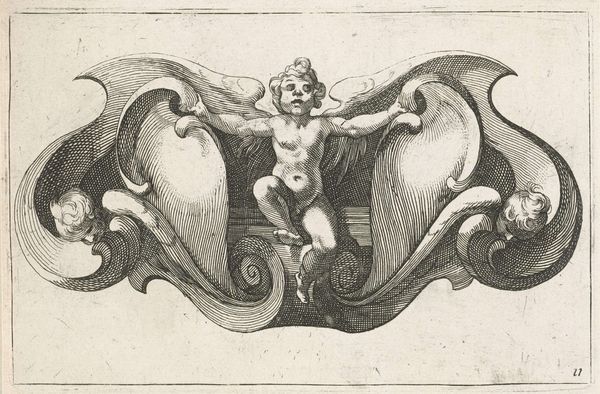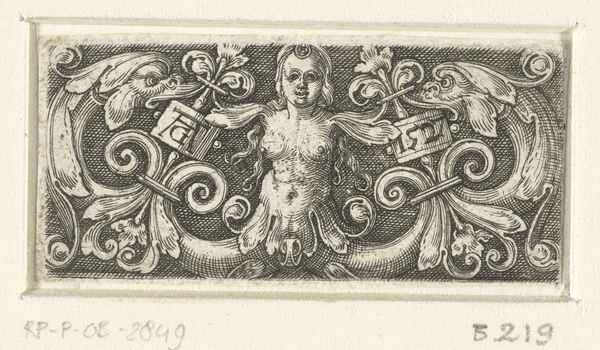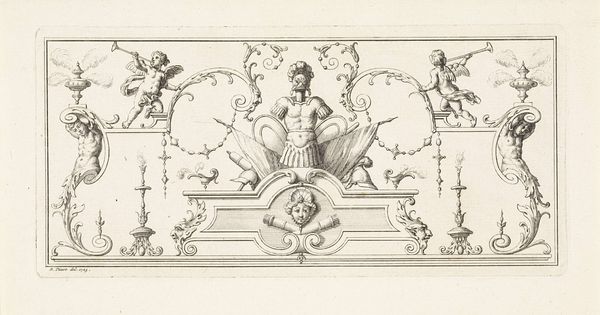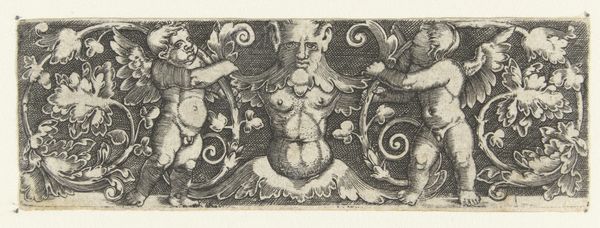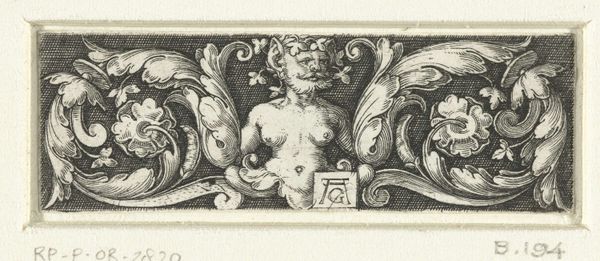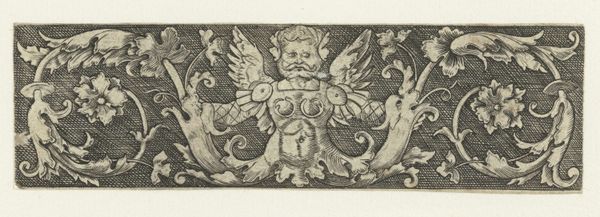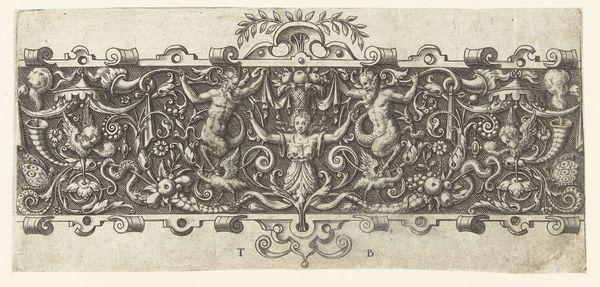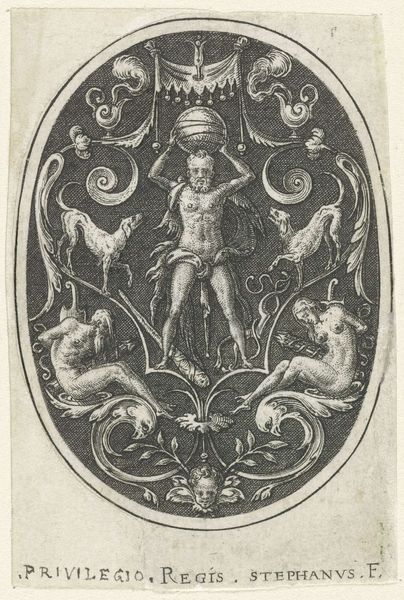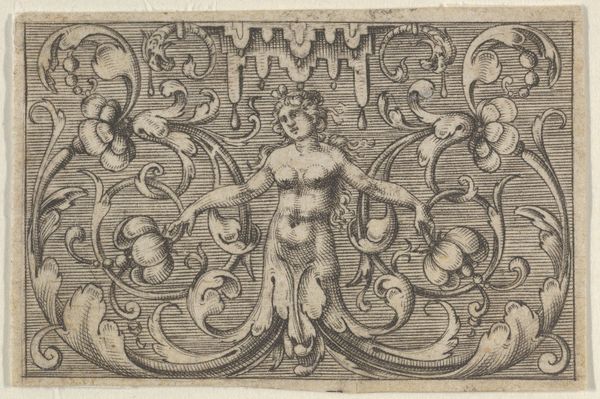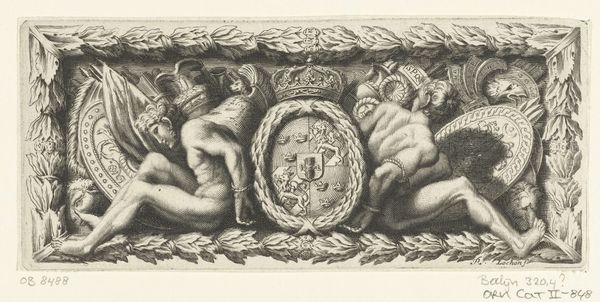
print, engraving
#
portrait
#
pen drawing
# print
#
figuration
#
form
#
11_renaissance
#
northern-renaissance
#
engraving
#
miniature
Dimensions: height 24 mm, width 72 mm
Copyright: Rijks Museum: Open Domain
Curator: Looking at this small, intensely detailed engraving, I am immediately struck by its almost fantastical mood, like peering into a tiny world of ancient myths. Editor: Indeed! What we see before us is “Fries met sater tussen twee bladranken,” which translates to “Frieze with satyr among two leaf vines," created by Heinrich Aldegrever in 1532. Aldegrever was a German printmaker known for his intricate engravings, often exploring secular and occasionally provocative themes rooted in Renaissance humanism. Given the social context of the Reformation, artists such as Aldegrever subtly grappled with changing societal values, which shaped his production. Curator: Provocative is right! That cheeky little satyr... he's almost too casual. What's captivating, though, is how alive everything feels, despite the restriction of the engraving. Editor: The medium is quite telling here; prints during this period were integral to disseminating ideas across different audiences, especially ideas that would otherwise be confined. The presence of a satyr points to the prevailing interest in classical antiquity alongside rising theological debates and serves as a potent symbol of the era's dynamic tension between classical paganism and Christian doctrine. How interesting that miniature mythological worlds could be printed and disseminated. Curator: Yes, this is definitely an interesting and unique little object! His body is very naturalistic. Editor: He seems suspended, a visual reminder of ongoing debates between faith and free will, order and chaos. I almost imagine it would serve as ornamentation to be shared to signal one’s stance in intellectual circles. I find its subtle daring very thought-provoking in light of modern feminist debates that consider the relationship between control, transgression, and representations of the human body. Curator: It is so exciting to me that art made centuries ago can so naturally invite dialogue on identity and expression today.
Comments
No comments
Be the first to comment and join the conversation on the ultimate creative platform.
